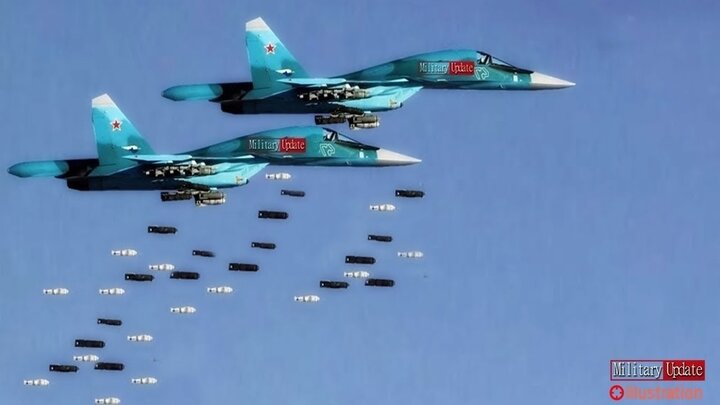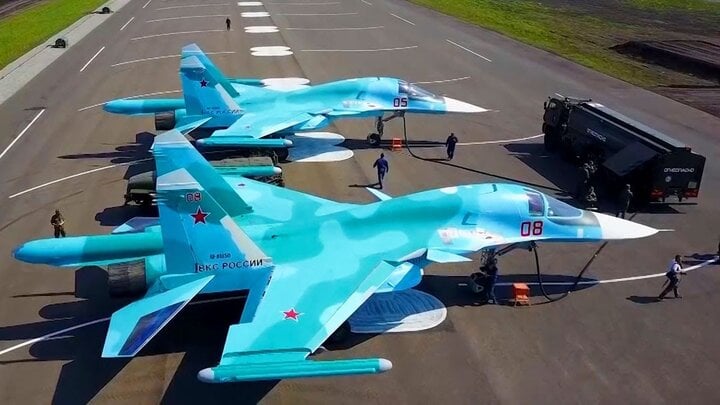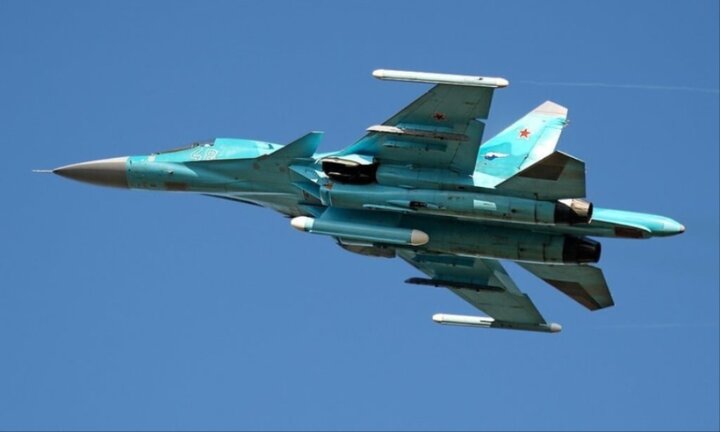The Russian Ministry of Defense has issued a directive to expand the scale of production of Su-34 attack fighter aircraft. This aircraft holds an important position in assuming the role of nuclear deterrent and conducting tactical attack missions on all battlefields from Syria, the Arctic to the Western Pacific.
This plan takes place in parallel with increased production of the fifth generation fighter Su-57. It is known that the number of Su-57s produced this year has doubled compared to 2022.
Russian Defense Minister Sergei Shoigu visited the Chkalov Aircraft Plant in Novosibirsk, Siberia in the first week of October and made the decision to increase Su-34 production, while emphasizing the importance of the fighter class. this competition in the Russian air force today.
“ This fighter plane is an important combat vehicle, it conducts 4 to 5 missions a day so we need to increase the production rate. There are businesses that are ahead of schedule this year and starting to do their part in 2024. ” Mr. Shoigu said, adding that production facilities have promptly provided new equipment and modernized some old equipment, and these weapons and equipment have been put into operation on the battlefield.

Russian Su-34 bomber.
Development of the Su-34M
The Su-34 is one of the longest-range tactical fighter aircraft in the world. This aircraft is an improved version of the Soviet Union’s leading fighter – the Su-27 Flanker.
The Su-34 is about 50% heavier and has a significantly greater payload than the original Su-27, capable of deploying a wide variety of cruise missiles and guided bombs. Notably, the Su-34 has been widely deployed and directly participated in combat operations since the end of 2015 in Syria and from the beginning of 2022 in Ukraine.
Initially, the Su-34 production rate was very low, in 2008 only a single airframe was built, it took 6 years for this aircraft to enter the Russian Air Force, i.e. was in 2014.
However, since 2014, the production rate of the Su-34 has increased significantly, and in that year 18 airframes were ordered. In the following years, the delivery rate of new Su-34 aircraft has always ranked among the top types of fighter aircraft ordered by the Russian military.
The Russian Ministry of Defense has purchased more Su-34s than any other fighter since the collapse of the Soviet Union. This partly reflects the great need to replace the Russian Air Force’s fleet of outdated Su-24M fighter aircraft. The new Su-34 will take on the role of replacing the Su-24.
The Russian Ministry of Defense also received the latest Su-34s in June 2023, notably these aircraft have been built to advanced standards like the Su-34M variant. General Director of Russia’s United Aircraft Corporation Yury Slyusar stated that these new Su-34s have twice the combat capabilities of the original Su-34.

Su-34M.
Besides the standard Su-34M fighter, specialized variants built for electronic warfare or reconnaissance have also been delivered. The Su-34 reconnaissance variant is integrated with the UKR-RT electronic search cluster, UKR-OE and UKR-RL camera clusters with integrated synthetic aperture radar. Meanwhile, the Su-34 electronic warfare variant is integrated with the L700 Tarantul ECM cluster as the main weapon along with a number of other secret improvements.
New capabilities
In early September, the Su-34 also demonstrated compatibility with a new weapon, the Kh-47M2 Kinzhal hypersonic ballistic missile, allowing this fighter to attack targets. 2,000km away.
The Kh-47M2 Kinzhal missile has very high maneuverability, it can carry nuclear warheads or many types of conventional warheads and is almost impossible to intercept. Kinzhal missiles have been widely used on the Ukrainian battlefield, one of the most notable results being the destruction of Patriot missile batteries transferred to Ukraine by the West in May 2023.
The integration of missiles into the Su-34 will revolutionize the combat capabilities of this aircraft and is expected to increase production demand for this aircraft. The fact that the Su-34M can deploy Kinzhal missiles is considered a great success, because previously only the MiG-31K was equipped with this type of missile, but the operating costs are very expensive.

Su-34M carries Kinzhal missiles.
The decision to install Kinzhal on the Su-34M is speculated by many experts to be due to the impressive combat performance of this missile on the Ukrainian battlefield. At the same time, by mid-2023 the output of this type of missile has increased four times compared to the output level before the conflict broke out, which means that the scale of the existing MiG-31s is not equivalent commensurate with the current number of missiles, so the appearance of the Su-34 is very timely.





